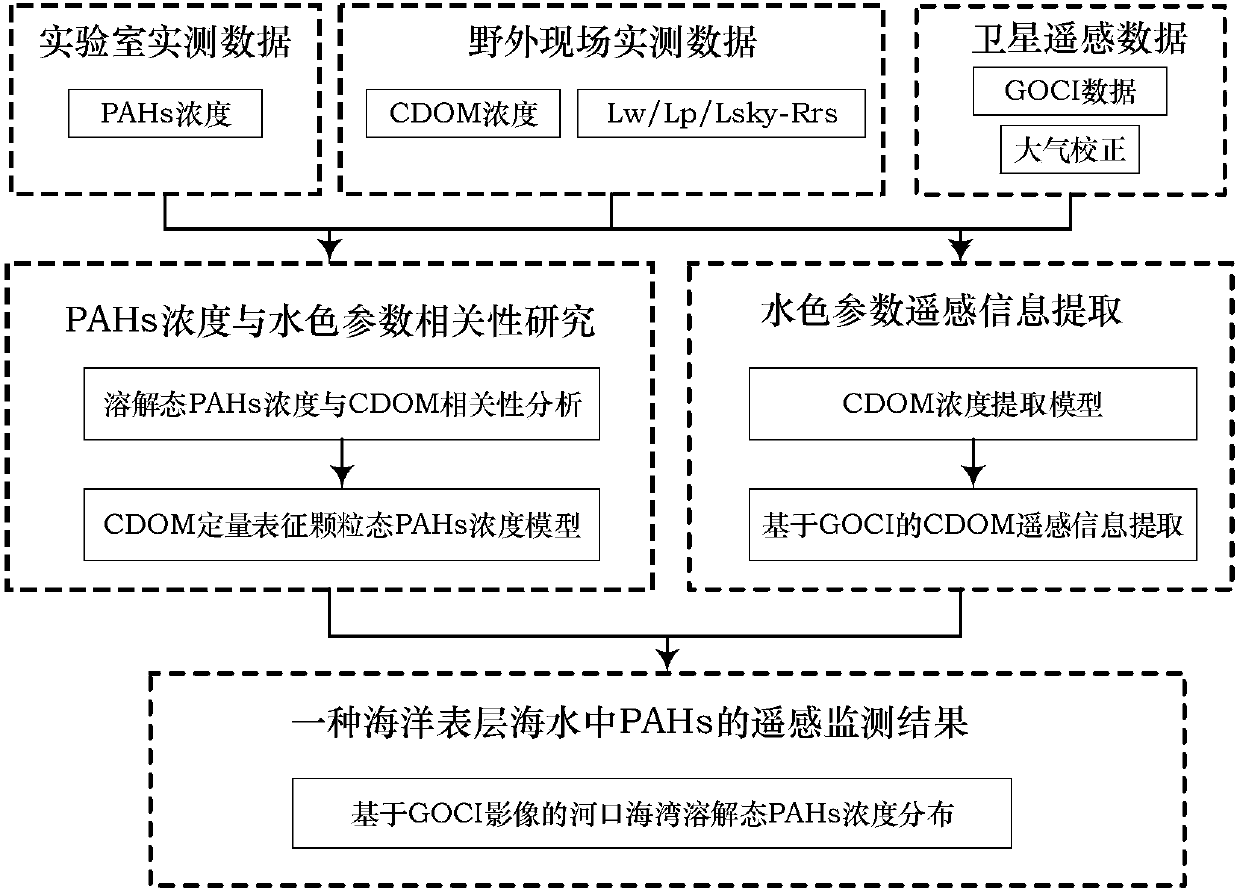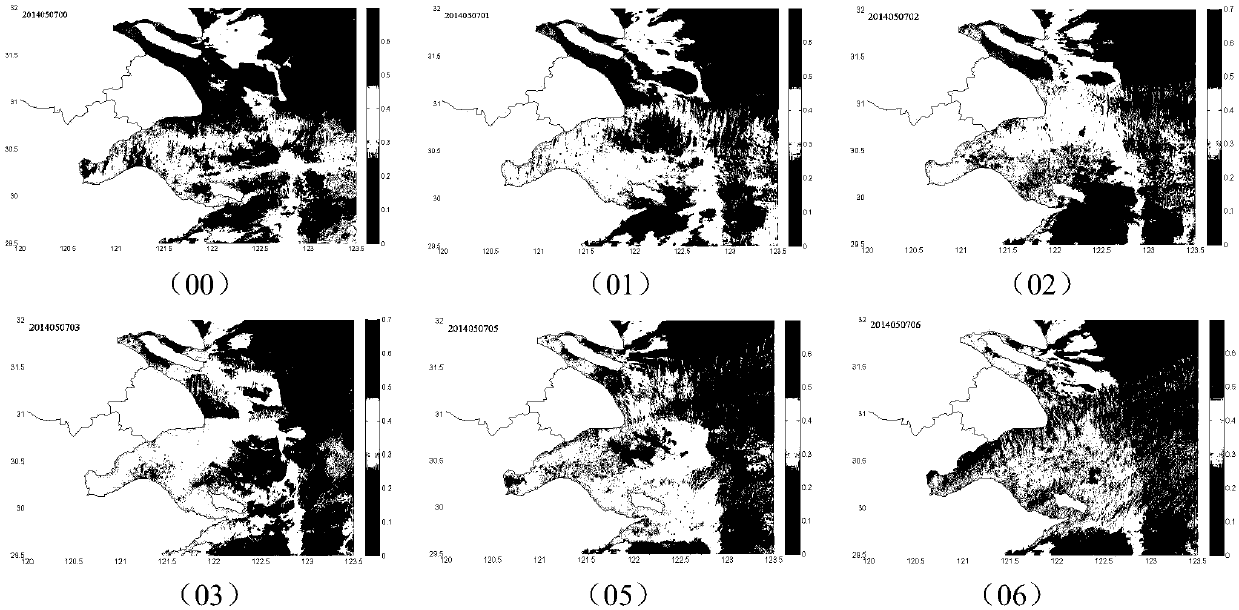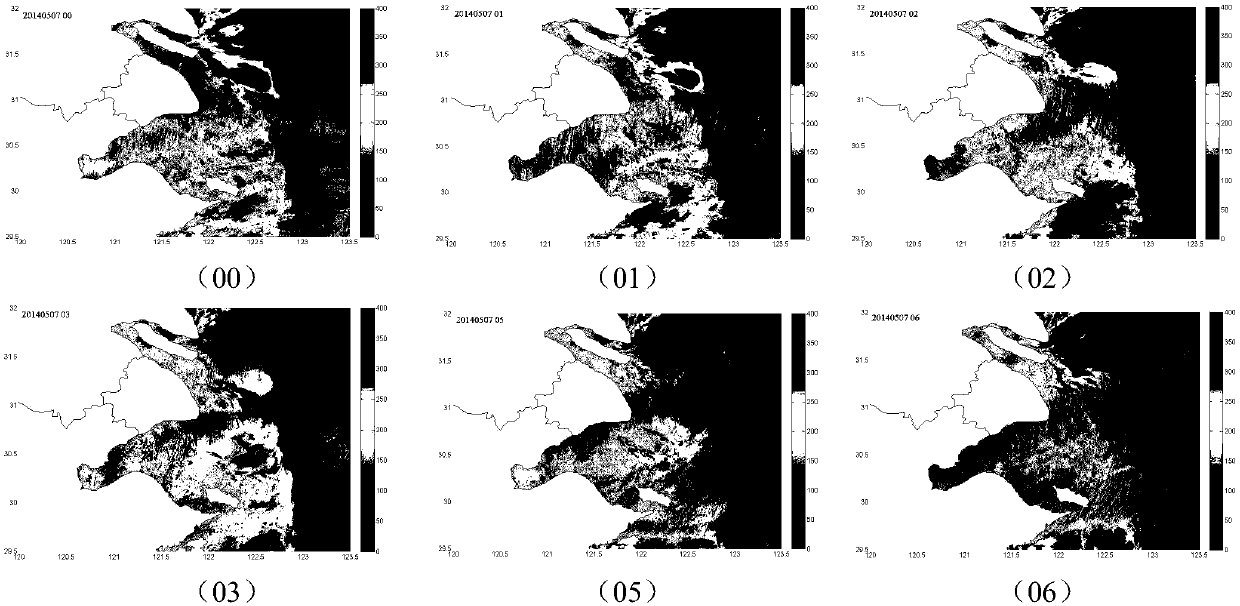Method for monitoring polycyclic aromatic hydrocarbons (PAHs) in surface seawater by means of remote sensing
A technology for polycyclic aromatic hydrocarbons and remote sensing monitoring, which is applied in the fields of marine ecological environment monitoring, marine pollutants, water quality remote sensing, marine water color remote sensing, and marine environment remote sensing. monitoring needs, time-consuming and other issues, to achieve the effect of maintaining human health and reproduction, maintaining ecological environment safety, high promotion value and application prospects, and eliminating health and environmental risks
- Summary
- Abstract
- Description
- Claims
- Application Information
AI Technical Summary
Problems solved by technology
Method used
Image
Examples
Embodiment Construction
[0056] The present invention will be further described below in conjunction with the accompanying drawings.
[0057] refer to figure 1 A method for remote sensing monitoring of dissolved PAHs in ocean surface water, wherein the method for remote sensing monitoring of PAHs comprises the following steps:
[0058] Step (1), extracting the measured data of the water color parameter CDOM concentration and the measured data of the PAHs concentration in the surface seawater in the estuary and bay area to be monitored; at the same time, obtaining the measured data of the remote sensing reflectance Rrs of the surface water body;
[0059] The CDOM concentration cannot be measured directly, and it is represented by the CDOM absorption coefficient. The water sample is collected on site and filtered, and the internationally accepted "light transmission measurement method" is used to measure the CDOM absorbance D using an ultraviolet-visible spectrophotometer UV-3600. (λ), according to the...
PUM
 Login to View More
Login to View More Abstract
Description
Claims
Application Information
 Login to View More
Login to View More - R&D
- Intellectual Property
- Life Sciences
- Materials
- Tech Scout
- Unparalleled Data Quality
- Higher Quality Content
- 60% Fewer Hallucinations
Browse by: Latest US Patents, China's latest patents, Technical Efficacy Thesaurus, Application Domain, Technology Topic, Popular Technical Reports.
© 2025 PatSnap. All rights reserved.Legal|Privacy policy|Modern Slavery Act Transparency Statement|Sitemap|About US| Contact US: help@patsnap.com



